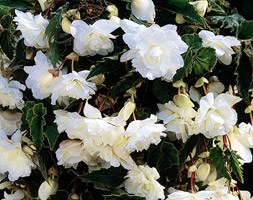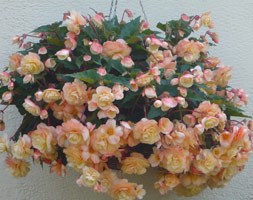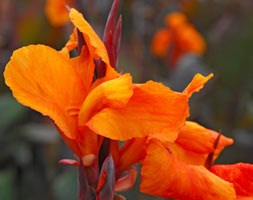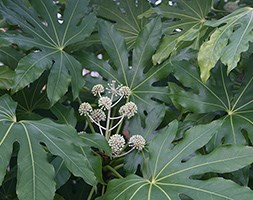Price reductions at Crocus
by Sarah - April 10th, 2014.Filed under: Crocus, Price Reductions.
Reduced price on products today at Crocus
Begonia (Pendula Group) ‘White Giant’ (begonia tuber) was £3.99 now £1.49
Position: full sun or partial shade Soil: moderately fertile, humus-rich, well-drained soil Rate of growth: average to fast-growing Flowering period: July to the first frosts Hardiness: tender (needs frost protection) Bulb size: 4/5 White flowers always makes a statement and they are particularly useful for lightening up shadier spots. This new trailing begonia is perfect then as it has really large flowers that wont go unnoticed, and it is very happy in lower-light positions. Garden care: Pot up in early spring when the growth can be seen emerging from the tubers. Begonias are tender so must be protected by frosts, however you can pot them up and grow them on under glass from January onwards. The indented side of the tuber is the top, and this should just be covered by a fine layer of compost. Water well and keep them in a bright, warm spot, watering again only when the soil becomes quite dry. Once they are actively growing they can be watered more regularly, especially those growing in sunnier positions, but make sure that the compost or soil is never overly wet or waterlogged. During the growing season they can be fed with a balanced liquid fertiliser. Begonias grown in the ground should be lifted before the first hard frosts and left to die back before being stored in a well ventilated, dry place over the winter. Container-grown plants should be brought under cover during winter and ‘potted on’ into a slightly larger container each year in spring.
Begonia (Pendula Group) ‘Red Giant’ (begonia tuber) was £3.99 now £1.49
Position: full sun or partial shade Soil: moderately fertile, humus-rich, well-drained soil Rate of growth: average to fast-growing Flowering period: July to the first frosts Hardiness: tender (needs frost protection) Bulb size: 4/5 Larger than average camellia-like flowers seem to drip from the lax stems putting on an impressive display for months on end from midsummer. A must for hanging baskets, patio pots and windowboxes. Garden care: Pot up in early spring when the growth can be seen emerging from the tubers. Begonias are tender so must be protected by frosts, however you can pot them up and grow them on under glass from January onwards. The indented side of the tuber is the top, and this should just be covered by a fine layer of compost. Water well and keep them in a bright, warm spot, watering again only when the soil becomes quite dry. Once they are actively growing they can be watered more regularly, especially those growing in sunnier positions, but make sure that the compost or soil is never overly wet or waterlogged. During the growing season they can be fed with a balanced liquid fertiliser. Begonias grown in the ground should be lifted before the first hard frosts and left to die back before being stored in a well ventilated, dry place over the winter. Container-grown plants should be brought under cover during winter and ‘potted on’ into a slightly larger container each year in spring.
Begonia ‘Champagne’ (begonia tuber) was £3.99 now £1.99
Position: full sun or partial shade Soil: moderately fertile, humus-rich, well-drained soil Rate of growth: average to fast-growing Flowering period: May to the first frosts Hardiness: tender (needs frost protection) This trailing begonia will provide long-lasting colour in hanging baskets, containers or window boxes. Alternatively plant it along the front edge of a border or path where it can spill over, softening the edges. Garden care: Pot up in early spring when the growth can be seen emerging from the tubers. Begonias are tender so must be protected by frosts, however you can pot them up and grow them on under glass from January onwards. The indented side of the tuber is the top, and this should just be covered by a fine layer of compost. Water well and keep them in a bright, warm spot, watering again only when the soil becomes quite dry. Once they are actively growing they can be watered more regularly, especially those growing in sunnier positions, but make sure that the compost or soil is never overly wet or waterlogged. During the growing season they can be fed with a balanced liquid fertiliser. Begonias grown in the ground should be lifted before the first hard frosts and left to die back before being stored in a well ventilated, dry place over the winter. Container-grown plants should be brought under cover during winter and ‘potted on’ into a slightly larger container each year in spring.
Begonia (Pendula Group) ‘Pink Giant’ (begonia tuber) was £3.99 now £1.99
Position: full sun or partial shade Soil: moderately fertile, humus-rich, well-drained soil Rate of growth: average to fast-growing Flowering period: July to the first frosts Hardiness: tender (needs frost protection) Bulb size: 4/5 Super-sized flowers put on a great display as they spill over the edges of pots or windowboxes. This is a great choice if you have hanging baskets in a shadier spot, as they will still carry on flowering, and do not need as much water as many of the other seasonal bedding plants. Garden care: Pot up in early spring when the growth can be seen emerging from the tubers. Begonias are tender so must be protected by frosts, however you can pot them up and grow them on under glass from January onwards. The indented side of the tuber is the top, and this should just be covered by a fine layer of compost. Water well and keep them in a bright, warm spot, watering again only when the soil becomes quite dry. Once they are actively growing they can be watered more regularly, especially those growing in sunnier positions, but make sure that the compost or soil is never overly wet or waterlogged. During the growing season they can be fed with a balanced liquid fertiliser. Begonias grown in the ground should be lifted before the first hard frosts and left to die back before being stored in a well ventilated, dry place over the winter. Container-grown plants should be brought under cover during winter and ‘potted on’ into a slightly larger container each year in spring.
Canna ‘Wyoming’ (Indian shot bulb) was £4.99 now £2.99
Position: full sun Soil: fertile, well-drained soil or loam-less potting compost Flowering period: June to September Flower colour: apricot-orange Other features: large, purple-bronze leaves Hardiness: half hardy (will need winter protection) Each leaf is variously striped in green, purple, orange and pink, creating a dazzling effect that is further enhanced when the orange flowers appear. Spectacular in a hot-themed planting scheme, it also mixes well with plum and purple. Garden care: Pot the rhizomes up into 20cm pots filled with a good quality compost. The rhizomes should be planted shallowly, just covering them with compost, but making sure that any new shoots are above soil level. Water lightly and then grow them on at temperatures above 10C, increasing the water as they start to grow. Gradually harden off before planting out after all risk of frost has passed. Water regularly during the growing season, applying a phosphorus-rich liquid fertiliser each month. In frost-prone areas lift the rhizomes in autumn and store in a frost-free environment in barely-moist compost or leaf mould.
Canna ‘Chocolate Sunrise’ (Indian shot bulbs) was £4.99 now £2.99
Position: full sun (or indoors in full light shaded from hot sun) Soil: fertile, well-drained soil or loam-less potting compost Flowering period: June to September Other features: large bold leaves Hardiness: half hardy (will need winter protection) A treat for jungle-themed borders, and useful for adding height to summer bedding schemes, this gorgeous canna has a rich blend of colours that will create a tropical feel. Garden care: Pot the rhizomes up into 20cm pots filled with a good quality compost. The rhizomes should be planted shallowly, just covering them with compost, but making sure that any new shoots are above soil level. Water lightly and then grow them on at temperatures above 10C, increasing the water as they start to grow. Gradually harden off before planting out after all risk of frost has passed. Water regularly during the growing season, applying a phosphorus-rich liquid fertiliser each month. In frost-prone areas lift the rhizomes in autumn and store in a frost-free environment in barely-moist compost or leaf mould.
Fatsia japonica (Japanese aralia) was £12.99 now £6.49
Position: full sun or partial shade Soil: moist, well-drained soil Rate of growth: average Flowering period: September to October Hardiness: frost hardy (needs winter protection in cold areas) A handsome, tropical-looking, evergreen shrub that’s deservedly popular. It has huge, glossy, deep green palmate leaves and in autumn, produces showy panicles of spherical, creamy white flowers, which are often followed by round, black fr uit. Try it in an exotic-style garden, where the large leaves team well with bamboos and grasses, or as a focial point for a shady corner. Garden care: Prune lightly in mid to late spring, trimming shoots that spoil the symmetry. Protect plants from cold, drying winds.
Paeonia lactiflora ‘Karl Rosenfield’ (paeony / peony) was £14.99 now £9.99
Position: full sun or partial shade Soil: fertile, moisture-retentive yet well-drained Rate of growth: average Flowering period: June to July Hardiness: fully hardy Prized for their blowsy, glamorous blooms and glossy, deeply cut foliage, peonies are held in deep affection by many gardeners, despite their shortish flowering season and vulnerability to peony wilt in damp weather. It’s easy to see why. From the promise of early spring, when their red, mottled shoots push through bare earth and the handsome foliage unfurls from spherical red buds, to early summer, when the huge flowers burst open, peonies exert a fascination that few can resist. ‘Karl Rosenfield’ has fragrant double flowers of startling magenta, from early to mid summer among deeply cut mid green leaves. The reddish-bronze foliage of this striking peony provides interest from early spring and after the plant has flowered. Garden care: Deadhead after flowering. In early spring apply a top dressing of a balanced, slow release fertiliser around the base of the plant and mulch with well-rotted compost or manure. If the plant shows signs of collapse or the leaves become spotty, this may be a symptom of peony botrytis. Remove affected leaves immediately. In the autumn, cut off all the foliage and dispose of it to prevent reinfection the following spring.
Paeonia lactiflora ‘Duchesse de Nemours’ (paeony / peony) was £14.99 now £9.99
Position: full sun or partial shade Soil: fertile, moisture-retentive yet well-drained Rate of growth: average Flowering period: June to July Hardiness: fully hardy Prized for their blowsy, glamorous blooms and glossy, deeply cut foliage, peonies are held in deep affection by many gardeners, despite their short flowering season and vulnerability to peony wilt in damp weather. It’s easy to see why. From the promise of early spring, when their red, mottled shoots push through bare earth and the handsome foliage unfurls from spherical red buds, to early summer, when the huge flowers burst open, peonies exert a fascination that few can resist. ‘Duchesse de Nemours’ has huge, bowl-shaped pure white, fragrant, double flowers, flushed green in bud, from early to midsummer. This classic, double- flowered peony from the mid nineteenth century is a favourite of the cut-flower trade. It will thrive in full sun or partial shade. Fill the bare ground around the peony before the leaves appear with spring bulbs to prolong the season of interest. Garden care: Deadhead after flowering. In early spring apply a top dressing of a balanced slow release fertiliser around the base of the plant and mulch with well-rotted compost or manure. If the plant shows signs of collapse or the leaves become spotty, this may be a symptom of peony botrytis. Remove affected leaves immediately. In the autumn, cut off all the foliage and dispose of it to prevent reinfection the following spring.















